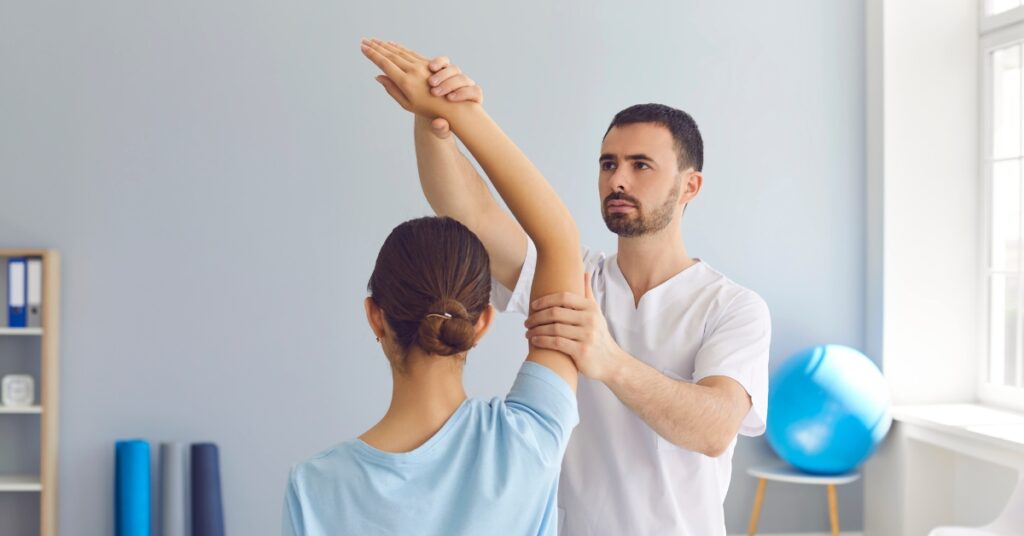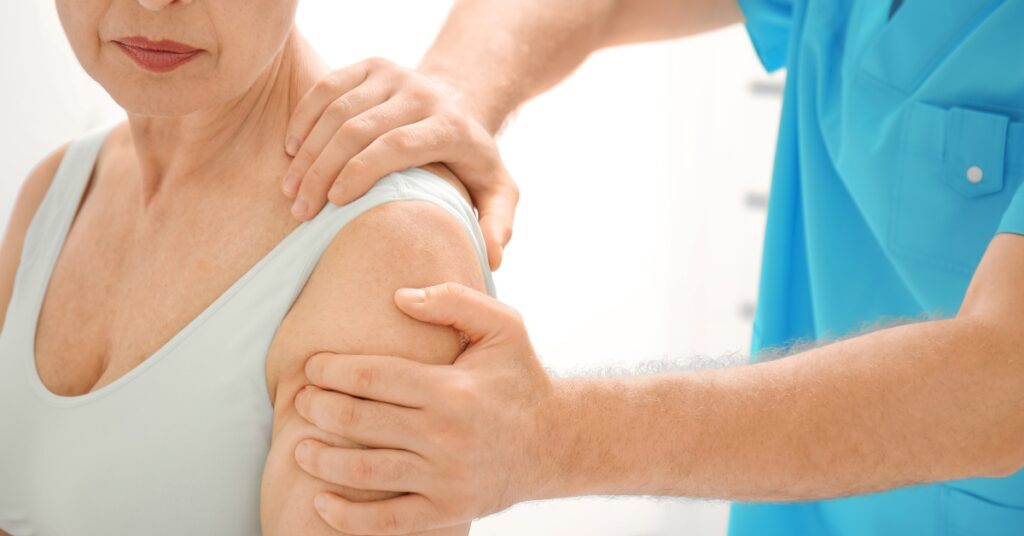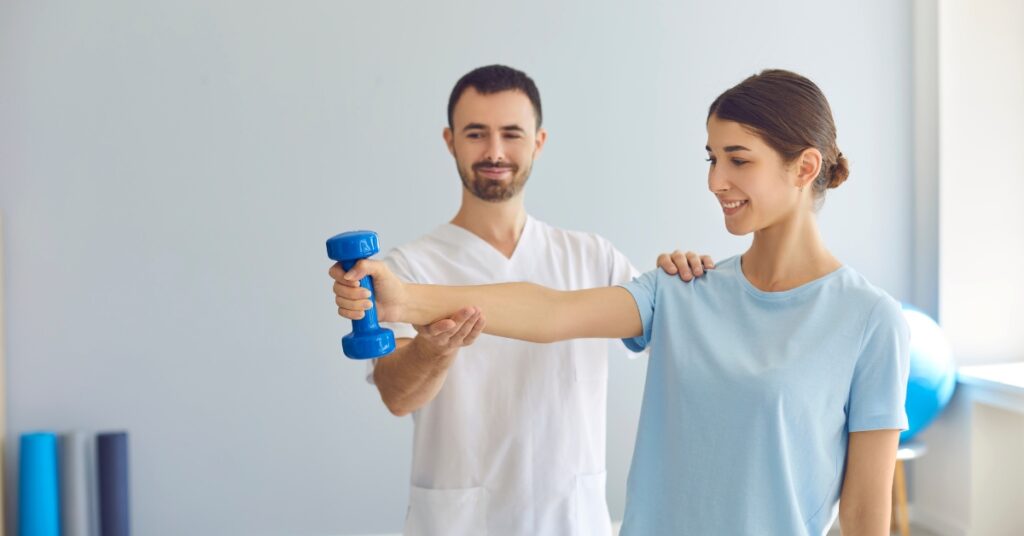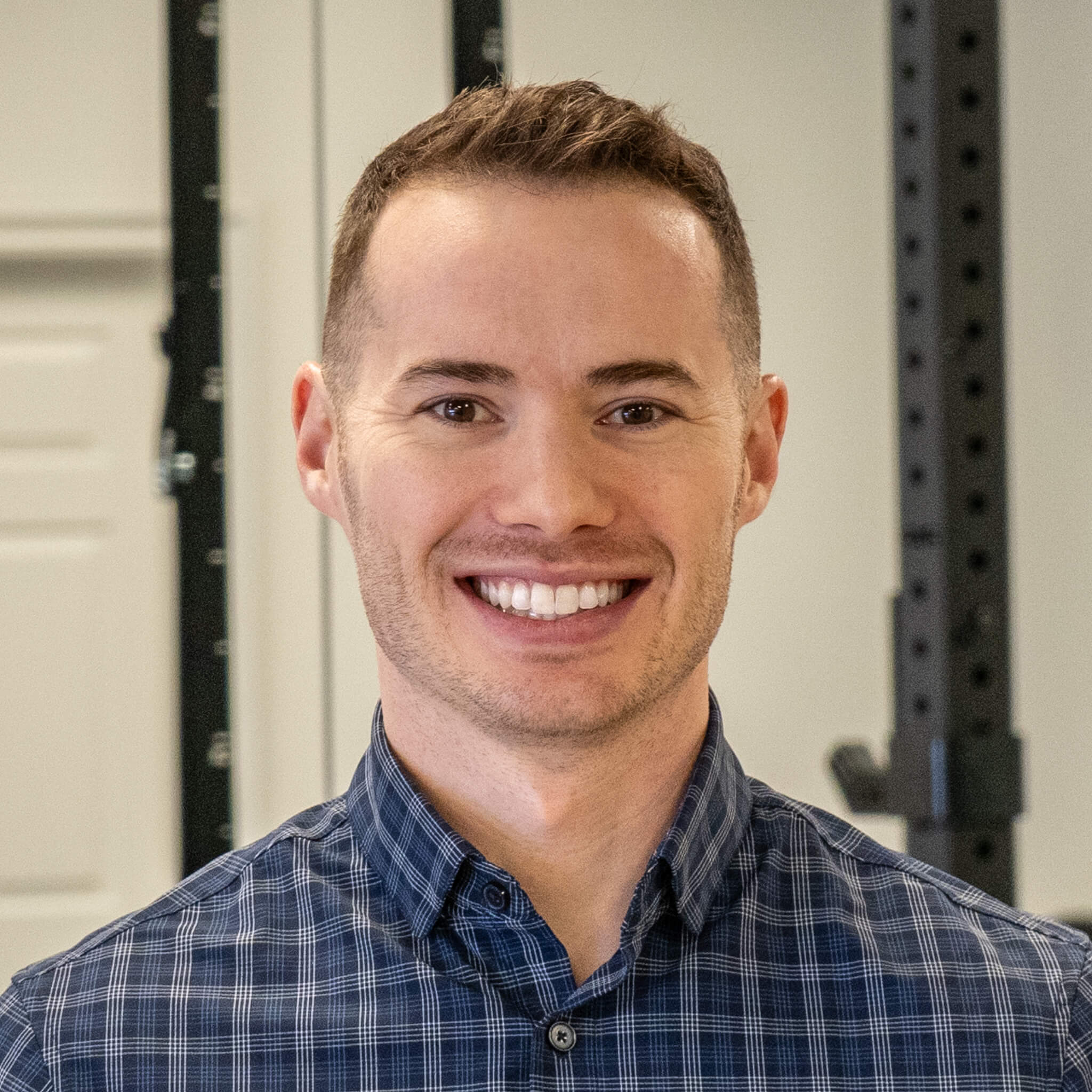A torn rotator cuff can make even simple movements feel impossible. Reaching for a glass, lifting a bag, or even sleeping comfortably becomes a challenge. You want to know how to heal a torn rotator cuff naturally, but is that possible?
The good news? Many rotator cuff tears don’t need surgery. With the right approach, your body can heal itself.
Natural recovery takes patience, but it’s possible with a mix of rest, gentle movement, and targeted therapies. The key is reducing inflammation, strengthening supportive muscles, and avoiding further strain.
You don’t have to live with pain or limited mobility forever. Let’s go over the best ways to help your shoulder heal without surgery.
Assessment of Rotator Cuff Injury
Identifying a rotator cuff injury early can make a huge difference in your recovery process. Whether you’re dealing with a dull ache deep in your shoulder joint or sharp pain with overhead activities, understanding the extent of your injury is the first step toward healing.
Signs and Symptoms of a Rotator Cuff Tear
A torn rotator cuff doesn’t always cause severe pain. Sometimes, it starts with a dull ache deep in the affected shoulder, making simple arm movements uncomfortable.
Common signs include:
- Pain with overhead activities like reaching for a high shelf or lifting weights
- A dull ache deep in the shoulder joint that worsens at night
- Weakness in the affected side when lifting or rotating the arm
- Limited range of motion making everyday tasks, like putting on a jacket, difficult
- Cracking or popping sounds when moving the shoulder
If you’re experiencing any of these symptoms, a physical therapist can help determine whether you have a rotator cuff tear and if natural healing is an option.
Physical Therapist Evaluation
A physical therapist assesses your shoulder pain by testing how the rotator cuff muscles and tendons function. The goal is to determine whether the injury can heal naturally or if further medical evaluation is needed.
A PT will examine:
- Range of motion to see how well the affected shoulder moves compared to the other arm
- Strength of the rotator cuff muscles to check for weakness or instability
- Pain levels with different arm movements, especially lifting, reaching, and rotating
- Posture and muscle imbalances in the shoulder, back, and shoulder blade to identify contributing factors
If the tear is minor, treatment options like rest and activity modification, heat therapy, and physical therapy can provide relief and help restore function.

Special Tests for Rotator Cuff Injury
A physical therapist may perform specific tests to pinpoint a torn rotator cuff. These involve gentle pressure and guided arm movements to check how the rotator cuff tendons respond.
Some common tests include:
- Empty Can Test – You lift your arm at an angle while the PT applies resistance. Pain or weakness may indicate a rotator cuff tear.
- Drop Arm Test – You slowly lower your arm from an overhead position. If the arm drops suddenly, it may signal tendon damage.
- Hawkins-Kennedy Test – The PT bends your arm and rotates it inward. Sharp pain can suggest inflammation in the rotator cuff tendons.
When to See a Shoulder Specialist
If you experience severe pain, significant weakness, or worsening symptoms despite treatment, a referral to an orthopedic surgeon may be necessary. They can order imaging tests like an MRI to confirm whether tendon repair or rotator cuff surgery is required.
Signs you may need further evaluation include:
- Persistent rotator cuff pain that doesn’t improve with physical therapy
- Severe loss of shoulder movement making daily routines difficult
- Pain that worsens at night, even with pain management strategies
- A sudden, sharp pain after an injury followed by immediate weakness
A torn rotator can often heal with conservative treatment, but in some cases, rotator cuff surgery is the best option for long-term recovery. A thorough assessment ensures you take the right path toward healing and reducing joint pain.

How to Heal a Torn Rotator Cuff Naturally with Physical Therapy
Shoulder pain can limit your ability to perform simple tasks like reaching, lifting, or even sleeping comfortably.
Physical therapy offers a powerful treatment option to help you regain strength and mobility whether your discomfort stems from a:
- Rotator cuff tear
- Joint pain
- Painful shoulder caused by overuse
Understanding Shoulder Pain and Its Causes
Pain in the shoulder joint often results from strain on the muscles and tendons that provide stability and movement.
The rotator cuff, made up of four muscles, plays a key role in lifting and rotating the arm.
Common causes of shoulder pain include:
- Rotator cuff tear from repetitive arm movements or sudden injury
- Inflammation of the tendons due to overuse or aging
- Muscle imbalances affecting the shoulder blade and back muscles
- Joint pain and stiffness caused by arthritis or bone health issues
A physical therapist can identify the root cause of your pain and create a personalized plan to reduce inflammation, improve function, and prevent further injury.

How to Heal a Torn Rotator Cuff Naturally: Physical Therapy Can Relieve Pain
Physical therapy focuses on restoring mobility, reducing stress on soft tissues, and strengthening the muscles that support the shoulder.
A PT will guide you through techniques that target rotator cuff pain, improve blood flow, and reduce swelling.
Treatment methods often include:
- Manual therapy to mobilize the shoulder joint and relieve pain
- Stretching and strengthening exercises for the rotator cuff and back muscles
- Posture correction to reduce strain on the shoulder blade and arm bone
- Heat therapy to promote circulation and reduce inflammation
- Activity modification to avoid movements that aggravate a torn rotator cuff
By following a structured plan, you can alleviate pain and prevent the need for more invasive interventions like tendon repair or surgery.

How to Heal a Torn Rotator Cuff Naturally: Exercises to Strengthen the Rotator Cuff
Building strength in the shoulder muscles helps provide stability and prevent future injury. Your PT may introduce gentle exercises that target the muscles and tendons responsible for movement. These strength-building exercises help you learn how to heal a torn rotator cuff naturally.
Key exercises often include:
- Pendulum swings to increase mobility without stressing the upper arm bone
- Isometric shoulder holds to activate the rotator cuff without excessive strain
- Resistance band rotations to strengthen the four muscles that control arm movements
- Scapular retractions to improve back muscle engagement and posture
Gradually increasing intensity under professional guidance helps reduce pain and improve function without risking further injury.
Additional Pain Management Strategies
In some cases, additional treatment options may help alleviate pain and support healing. While physical therapy is the foundation of how to heal a torn rotator cuff naturally, other approaches can complement your progress.
Common pain relief strategies include:
- Anti-inflammatory medications to reduce inflammation and joint pain
- Corticosteroid injections for temporary pain relief in severe cases
- Rest and activity modification to allow the shoulder to heal properly
- Occupational therapists for guidance on reducing strain in daily tasks
If pain persists despite therapy, a shoulder specialist may recommend imaging to assess whether surgical options like tendon repair are necessary.

When to Seek Further Evaluation
Mild to moderate shoulder pain often improves with therapy, but severe or worsening symptoms may require further evaluation.
An experienced physical therapist can help you determine whether conservative treatment is enough or if additional interventions are needed. Taking the right steps now can help you avoid long-term complications and keep your shoulder strong and pain-free.
Up and Running Physical Therapy: Expert Help For Shoulder Pain
A Different Approach to Shoulder Pain Relief
At Up and Running Physical Therapy in Fort Collins, CO, you get more than just temporary relief.
Many people dealing with shoulder pain feel stuck in a cycle of rest, medication, and frustration. Traditional treatments often focus on managing symptoms rather than addressing the root cause.
We take a different approach. Instead of relying on medications, injections, or unnecessary surgery, we help you regain strength, mobility, and confidence in your body.
Our hands-on techniques and customized exercise plans get you moving again without relying on quick-fix solutions.
Why Choose Up and Running PT?
If you’ve tried other treatments or worked with a physical therapist before without success, you’re not alone. Many of our patients seek us out after feeling let down by traditional PT clinics.
Our approach goes beyond the basics to find what truly works for you.
Here’s what makes us different:
- Personalized treatment plans tailored to your specific shoulder pain and goals
- A movement-based approach that restores strength and function instead of masking pain
- One-on-one care with a physical therapist who listens and adapts treatment as you improve
- A commitment to long-term success, helping you move better and stay pain-free for good
What to Expect from Treatment
Your shoulder pain doesn’t have to control your daily life. Whether you’re dealing with a rotator cuff tear, joint pain, or general discomfort, our proven process helps you get back to doing what you love.
Here’s how we work with you:
- Comprehensive assessment to identify movement restrictions and muscle imbalances
- Hands-on techniques to improve mobility and relieve pain
- Targeted exercises that strengthen weak muscles and restore function
- Education and guidance to prevent future injuries and keep you pain-free
We help you break free from the endless cycle of pain and frustration. Instead of short-term fixes, you get lasting results that let you move with confidence.
Get Started with a Free Discovery Consultation
If you’re tired of shoulder pain holding you back, let’s talk. We offer a free discovery call where you can share your concerns, ask questions, and see if our approach is right for you.
There’s no commitment—just an opportunity to find real solutions for your pain.

